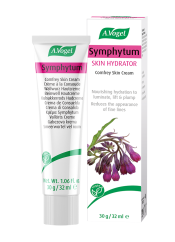Which foods prevent wrinkles?
As we get older, we may worry about our skin showing signs of aging such as looking duller, becoming drier, and being more wrinkled. In fact, in a survey we recently carried out, most of you said your biggest skin issue was wrinkles. You may often reach for lotions, creams and serums to reduce wrinkles; however, packing your diet with foods rich in antioxidants, healthy fats and other essential nutrients can have an anti-aging effect on the skin. Foods which can support your skin include:
- Salmon
- Wholegrains
- Leafy green vegetables.
Read on to find out more about the effect these foods have on the skin, and get some tips on how to incorporate them into your diet.
1. Salmon
Salmon is a highly nutrient-dense food, providing a rich source of high-quality protein, as well as vitamins and minerals including potassium, selenium and vitamin B12. However, it is the omega-3 fatty acids in salmon which are thought to have a positive effect on aging skin.
Omega-3 fatty acids, also known as polyunsaturated fatty acids (PUFA), are essential fatty acids, which means they cannot be made by the body and, therefore, must be acquired through the diet.
Omega-3 fatty acids are important for several functions in the body, including playing a crucial role in brain function, and also provide a host of other benefits such as supporting the heart and reducing inflammation, which may lower the risk of certain diseases such as diabetes and arthritis. On top of all this, they also favourably affect the skin.
The way the skin benefits from omega-3 fatty acids involves the epidermis, which is the skin's outer layer. The epidermis monitors the intake of nutrients into the skin, and the removal of waste products out of the skin. In addition, it influences the ability of cells in the skin to hold onto water. If the skin cell holds onto more water, this leads to softer, moister skin, which encourages wrinkle prevention and may slightly reduce the appearance of existing wrinkles.
As we age, our skin cells become thinner, and less able to hold moisture. In addition, the epidermal cells start to lose their ability to repair properly and this, combined with decreased moisture, causes dryness and promotes wrinkling.
Omega-3 fatty acids contribute to the upkeep of the skin cell membrane, which helps to keep moisture within the cells. This can make skin cells plumper and more hydrated, and reduces dryness, meaning your skin is less likely to appear wrinkled.
Salmon is a very versatile ingredient and can be added to pasta, rice and noodle dishes, as well as salads or roasted with your favourite vegetables. If you love salmon, try our smoked salmon and potato cakes with papaya chutney.
If you wish to reap the benefits of omega-3 fatty acids, but are not the biggest salmon fan, the following foods also provide a rich source:
- Mackerel
- Herring
- Oysters
- Sardines
- Anchovies
- Flax seeds
- Chia seeds
- Walnuts
- Avocados.
2. Wholegrains
As previously discussed, the skin's outer layer becomes thinner and weaker as we get older, which can leave us more susceptible to dehydration and wrinkling. In addition to this, the production of ceramides (molecules that keep the skin firm) naturally starts to slow down.
Ceramides are lipids which are naturally present in our skin cells, and provide a barrier between our skin and the environment. They play a main role in keeping skin moisturised, glowing and looking youthful.
As we get older, the reduction in ceramides means more environmental toxins can get into the skin, and more moisture can get out. As well as emphasising wrinkles, this can lead to other skin issues such as dryness and irritation, and conditions such as psoriasis and eczema.
So, where do wholegrains come into this? Well, phytoceramides (plant-based ceramides found in wholegrains such as wheat and brown rice) may help to protect the skin's outer layer.
Phytoceramides have a similar structure to the ceramides found in our skin and, therefore, can provide a comparable effect. Similarly, they may help to fight signs of aging by supporting the barrier between your skin and the environment, as well as trapping moisture in cells to keep skin hydrated.
For example, in one study, individuals with dry skin who took a wheat extract food supplement rich in phytoceramides for three months saw up to 35% improvement in skin hydration.1
If you are interested in increasing your intake of phytoceramides, try out these recipes which incorporate wholegrains!
If you're looking for a way to hydrate your skin, on top of increasing your intake of phytoceramides and other skin-loving foods, you may like to try our comfrey cream. It reduces the appearance of fine lines and wrinkles, as well as giving the skin a plumping effect.
A.Vogel Comfrey Cream Day & Night cream Naturally reduces the appearance of ageing, fine lines & wrinkles (30g)
£8.99 (30g) In Stock Get it tomorrow, 19th April.
3. Leafy green vegetables
Leafy greens such as broccoli, kale, spinach and cabbage contain many vitamins and minerals important for skin health, including vitamin A and vitamin C. Vitamin A supports the repair of normal skin, while vitamin C is involved in the formation of collagen which supports skin strength; both of these vitamins can therefore contribute to a healthier looking skin.
Many green leafy vegetables also contain lutein, which works similarly to the antioxidant beta-carotene. Lutein protects the skin from oxidative damage, which can dry out your skin and promote the development of wrinkles.
Green juices can be a quick and easy way to absorb the nutrients from your favourite green vegetables. However, ensure you make your own juices, as shop bought ones are often very high in added sugar. If you are looking for a green juice to try, perhaps our super veg & fruit smoothie or our easy de-bloat green smoothie will be just the thing for you!
If you're looking for another way to incorporate green leafy vegetables into your diet, try out these tasty recipes:
- Easy broccoli stir-fry with sesame and chilli
- Broccoli, kale and sweet potato soup
- Kale and avocado salad bowl
- Poached eggs with spinach on wholemeal toast
- Spinach risotto with zander.
References
1 https://www.ncbi.nlm.nih.gov/pubmed/20646083
What you said!
We recently asked you which foods you will try for skin health. We've crunched the numbers and here are the results.
Results: Which one of these foods will you try for skin health?
It's great to see that 50% of you would like to eat more fish for skin health. When choosing your fish, opt for oily options such as salmon, mackerel, sardines and anchovies as these are rich in omega-3 fatty acids which are thought to have a positive effect on the skin.










